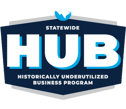Did you catch the blog Laura wrote recently about our time in Transylvania? If not, check it out! One thing our long flights and car rides afforded us was the time to catch up on our reading list.
Rpharmy’s Summer Shelf: Books & Podcasts We Loved
Topics: Rhazdrugs, Policy, USP <800>, Technology, NIOSH
Press Release: Rpharmy’s Rhazdrugs Wins Silver Stevie Award for Technology Excellence in Healthcare
Cloud-Based USP <800> Compliance, Hazardous Drugs Platform Honored for Innovation in Healthcare Worker Protection
Topics: Rhazdrugs, Policy, USP <800>, Technology, Formweb, News
Press Release: Rpharmy to Showcase Healthcare System’s Hazardous Drug Risk Initiative at Florida Society of Health System Pharmacists Annual Meeting
Rhazdrugs Client, Medication Safety Officer to Share Real-World Use of Rhazdrugs in USP <800> Compliance, Worker Safety
Topics: Rhazdrugs, Policy, USP <800>, Technology, Formweb, News
Press Release: Rpharmy CEO Laura Paxton Recognized in Becker’s Hospital Review's ‘Women in Health IT to Know’ List
Annual List Celebrates Innovative Women in Health IT Who Are Committed to Improving Healthcare Through Technology
Topics: Rhazdrugs, Policy, USP <800>, Technology, Formweb, News
Summer Travels: Rpharmy Takes a Bite Out of Transylvania
We hope your summer has brought a mix of adventure, meaningful time with family and friends, and opportunities for professional growth. And dare I say we hope you’ve had a minute to unplug and read some great books or watch some new shows? For members of the Rpharmy team—John, Caroline, and I—it’s been all of the above. We recently traveled to Romania for an exciting first: meeting our talented team of product developers and business analysts in person.
Topics: Rhazdrugs, Policy, USP <800>, Technology, NIOSH
Press Release: Rpharmy Serves as Platinum Sponsor of North Carolina Association of Pharmacists Annual Convention
Rpharmy Client, Medication Safety Officer to Host Lunch and Learn Event Focused on How Scripps Health Uses Rhazdrugs to Protect Healthcare Workers From Hazardous Drugs Exposure
Topics: Rhazdrugs, Policy, USP <800>, Technology, Formweb, News
From Regimen to Risk: How Clients Are Protecting Healthcare Workers from Hazardous Body Fluids
At Rpharmy, we pride ourselves on the relationships we've built with our clients over the years. These trusted partnerships often lead to eye-opening conversations—conversations that help us understand the real challenges healthcare teams face and how we can better support them. One such discussion recently centered on a deceptively simple but critical question.
Topics: Rhazdrugs, Policy, USP <800>, Technology, NIOSH
Does Pharmacy’s Role End at the Door? Nurses Don’t Think So.
Rpharmy has been on the road again, connecting with pharmacy professionals and healthcare leaders at events across the country, including the 2025 ONS Congress. We always love the opportunity to meet with our valued customers and those just getting to know us.
At ONS, we had truly insightful conversations with oncology nurses about their hazardous drug safety programs. One recurring theme? Communication gaps. Many nurses shared that their facilities still struggle to clearly communicate safety protocols related to hazardous drug handling.
This got us thinking: “Does the pharmacy’s obligation stop at the door?”
In other words, once the safety protocols are determined and documented, is it up to the nurses and other healthcare workers to access and follow them?
We say: Absolutely not. And USP <800> agrees.
Topics: Rhazdrugs, Policy, USP <800>, Technology, NIOSH
Topics: Rhazdrugs, Policy, USP <800>, Technology, NIOSH
Webinar Recap: Conversations with Friends - Part 1
Topics: Rhazdrugs, Policy, USP <800>, Technology, NIOSH







